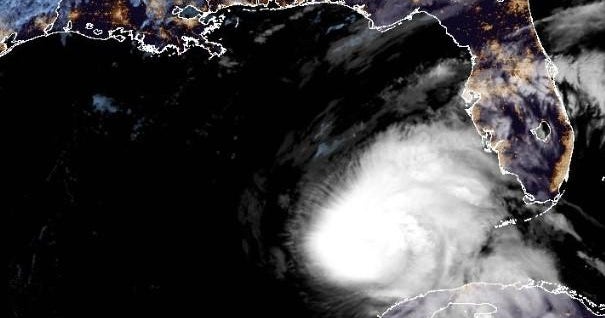Cuba was reeling Thursday after a fierce Category 3 hurricane ripped across the island and knocked out the country’s power grid after ravaging parts of the Cayman Islands and Jamaica.
The magnitude of Hurricane Rafael‘s impact on Cuba remained unclear through the early hours of the day.
On Wednesday evening, massive waves lashed at Havana’s shores as sharp winds and rain whipped at the historic cityscape, leaving trees littered on flooded roads. Much of the city was dark and deserted.
YAMIL LAGE / AFP via Getty Images
As it plowed across Cuba, the storm slowed to a Category 2 hurricane chugging into the southeastern Gulf of Mexico, according to the National Hurricane Center in Miami.
NOAA / National Hurricane Center
It said Rafael’s center was about 155 miles west-northwest of Havana, Cuba and 180 miles west of Key West, Florida at 4 a.m. EST with maximum sustained winds of 105 mph. The storm was moving west at 12 mph.
According to the hurricane center, “Rafael is expected to continue to move away from western Cuba over the southeastern Gulf of Mexico this morning. Rafael is then forecast to move over the southern Gulf of Mexico for the next few days.”
Many Cubans had a strange sense of déjà vu after a rocky few weeks in the Caribbean nation.
In October, the island was hit by a one-two punch. First, Cuba was roiled by island-wide blackouts stretching on for days, a product of the island’s energy crisis. Shortly after, it was slapped by another powerful hurricane that killed at least six people in the eastern part of the island.
It stoked discontent already simmering in Cuba amid an ongoing economic crisis, which has pushed many to migrate from Cuba.
While the State Department issued a travel warning for Cuba because of the storm, the Cuban government also raised an alarm, asking citizens to hunker down.
Classes and public transport were suspended on parts of the island and authorities canceled flights in and out of Havana and Varadero. Thousands of people in the west of the island were evacuated as a preventative measure, and many more, like Silvia Pérez, a 72-year-old retiree living in a coastal area of Havana, scrambled to prepare.
“This is a night I don’t want to sleep through, between the battering air and the trees,” Pérez said. “I’m scared for my friends and family.”
The concern came after the storm knocked out power in the Cayman Islands and Jamaica, where it also unleased flooding and landslides.
Rafael is the 17th named storm of the season.
The National Oceanic and Atmospheric Administration predicted the 2024 hurricane season was likely to be well above average, with between 17 and 25 named storms. The forecast called for as many as 13 hurricanes and four major hurricanes.
An average Atlantic hurricane season produces 14 named storms, seven of them hurricanes and three major hurricanes.



